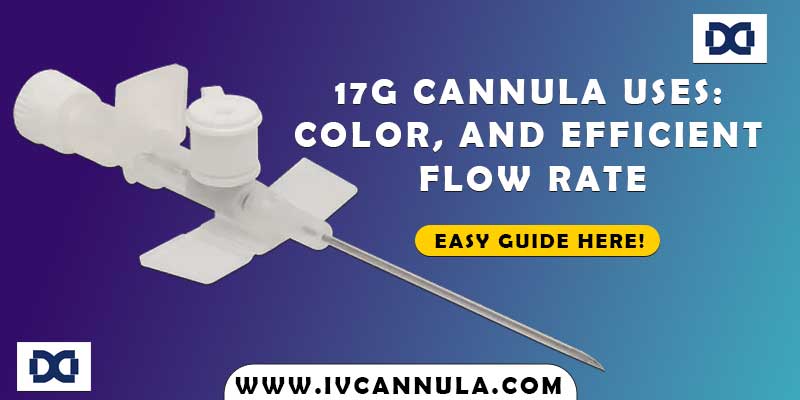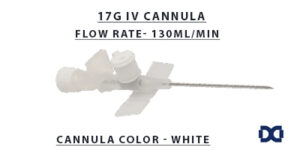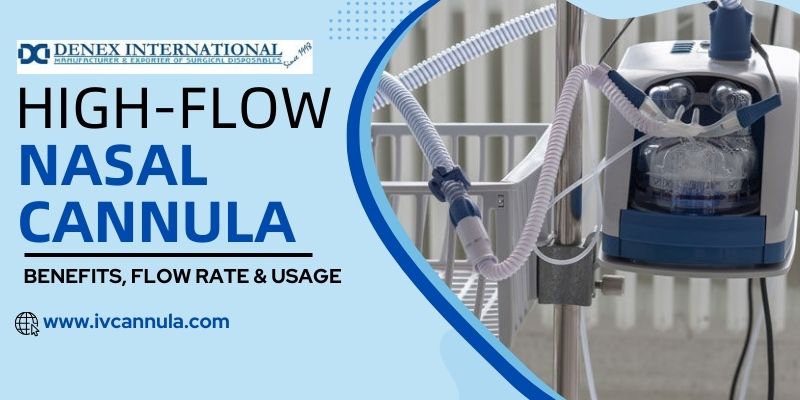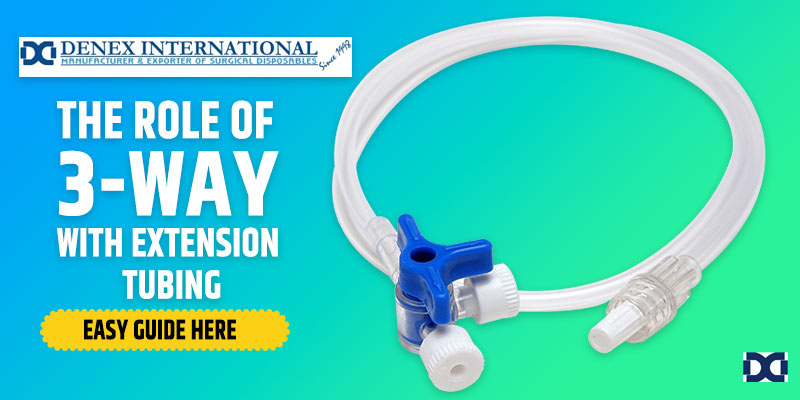In the dynamic landscape of modern healthcare, medical professionals continually seek precision and efficiency in their tools and techniques. Among these, the 17G cannula stands out as a key player, weaving its versatility into the fabric of diverse medical applications. This blog post embarks on a journey to unravel the multifaceted 17G cannula uses, delving into not only its functional applications, the significance of its color coding, and the efficiency of its flow rate.
Understanding 17G IV Cannula:
The 17G IV cannula, a pivotal component in medical interventions, represents a remarkable stride in intravenous technology. Distinguished by its white color, this gauge size signifies a delicate balance between versatility and precision in healthcare. With a 130 ml/min flow rate, understanding the 17G IV cannula unlocks a world of applications, ranging from routine medical procedures to critical interventions requiring swift and efficient fluid administration. Its color, a visual identifier in clinical settings, streamlines the selection process for healthcare professionals, ensuring seamless integration into patient care protocols. As a beacon of reliability, the 17G IV cannula enhances the overall patient experience, underscoring its significance in the ever-evolving landscape of medical advancements.
Color Coding and Identification:
The distinctive white color of the 17G IV cannula serves as a visual identifier in clinical settings. White Color coding simplifies selecting the appropriate size, reducing the risk of errors during medical procedures. Understanding the significance of the white color aids healthcare professionals in seamlessly integrating the 17G cannula into their practice.
Flow Rate and Efficiency:
With a 130 ml/min flow rate, the 17G IV cannula ensures the rapid delivery of fluids and medications. This attribute is particularly beneficial in critical situations where time is vital. The efficiency of the 17G cannula enhances the overall patient experience and contributes to successful medical interventions.
Outer Diameter of 17G IV Cannula (OD)
The 17G IV cannula, a critical component in intravenous therapy, commands attention for its gauge size and outer diameter (OD). The outer diameter of the 17G IV cannula measures 1.50mm, a specification that holds paramount significance in the world of medical interventions.
The outer diameter (OD) is a key metric as it determines the size and thickness of the cannula, influencing factors such as insertion ease, patient comfort, and flow rate. With an OD of 1.50mm, the 17G IV cannula strikes a delicate balance between ensuring sufficient strength for medical procedures and minimizing patient discomfort during insertion.
17G Cannula Uses Unveiled: A Point-wise Exploration
-
Swift Intravenous Administration:
-
- The 17G cannula excels in scenarios requiring rapid and efficient IV administration of fluids and medications.
- With a robust flow rate of 130 ml/min, it becomes a go-to choice in critical situations like trauma cases and major surgeries.
-
Versatility in Routine Procedures:
-
- Beyond emergencies, healthcare professionals rely on the 17G cannula for routine medical procedures.
- Its design strikes a balance, ensuring ease of insertion without compromising patient comfort.
-
Crucial in Surgical Contexts:
-
- The larger bore of the 17G cannula proves invaluable in surgeries, facilitating swift infusion of blood products and fluids.
- Its adaptability in diverse surgical scenarios underscores its reliability.
-
Higher Flow Rate for Optimal Care:
-
- The 17G cannula’s higher flow rate addresses situations where a rapid and efficient flow of substances is imperative for optimal patient care.
- This attribute enhances its utility across various medical interventions.
-
Color-Coded Precision:
-
- The characteristic white color of the 17G cannula serves as a visual identifier in color-coded systems.
- This aids healthcare professionals in selecting the appropriate size accurately, reducing the risk of errors.
-
Efficiency in Clinical Environments:
-
- The 17G cannula enhances workflow efficiency in busy clinical settings, providing seamless and accurate patient care.
- Its adaptability and reliability make it an essential instrument in the evolving healthcare landscape.
In essence, the 17G cannula, with its unique characteristics, emerges as a versatile tool addressing the dynamic needs of medical practice, from emergencies to routine procedures, surgeries, and beyond.
Complications of 17G Cannula
- Risk of Phlebitis:
-
- Using a 17G cannula, while beneficial in various medical scenarios, carries a potential risk of phlebitis.
- Phlebitis, inflammation of the vein wall, can occur due to the larger diameter of the cannula, causing irritation and discomfort at the insertion site.
- Infiltration Challenges:
-
- Complications related to infiltration are heightened with the 17G cannula, especially in patients with fragile veins.
- Infiltration occurs when the cannula unintentionally enters the surrounding tissue, leading to swelling, pain, and potential damage.
- Increased Discomfort for Patients:
-
- The larger size of the 17G cannula can contribute to increased discomfort during insertion.
- Patient discomfort may be more pronounced than smaller gauge cannulas, necessitating careful consideration of individual patient factors.
- Potential Hematoma Formation:
-
- The risk of hematoma formation is elevated with the 17G cannula, particularly in cases of difficult venipuncture or inadequate compression post-insertion.
- Hematomas may lead to localized swelling and pain due to the accumulation of blood outside the vessel.
- Limited Applicability in Fragile Veins:
-
- 17G cannulas may pose challenges in patients with fragile or small veins.
- The size and rigidity of the cannula may limit its applicability in specific patient populations, requiring careful assessment and alternative strategies.
- Possibility of Nerve Injury:
-
- Insertion of the 17G cannula carries a slight risk of nerve injury, especially in areas where nerves run close to the veins.
- Healthcare professionals must exercise caution during insertion to minimize the potential for nerve-related complications.
- Skill-Dependent Insertion:
-
- Successful and complication-free use of the 17G cannula depends on the skill and experience of the healthcare professional performing the insertion.
- Adequate training and proficiency are crucial to minimizing the risk of complications associated with using larger gauge cannulas.
Understanding and addressing these potential complications associated with the 17G cannula is essential for healthcare practitioners. Careful patient assessment, proper insertion techniques, and ongoing monitoring can mitigate these risks and ensure the safe and effective use of the 17G cannula in clinical practice.
Prevention of 17G Cannula
- Vein Assessment and Selection:
-
- Prioritize a thorough assessment of the patient’s veins before opting for a 17G cannula.
- Select appropriate veins that can accommodate the larger size, minimizing the risk of complications such as infiltration or hematoma.
- Proper Patient Positioning:
-
- Ensure the patient is positioned optimally during cannula insertion.
- Proper positioning aids in vein visibility and accessibility, reducing the likelihood of complications and enhancing the overall success of the procedure.
- Appropriate Insertion Technique:
-
- Employ a meticulous and skillful insertion technique when using a 17G cannula.
- This includes the use of a controlled, steady hand to minimize trauma to the vein walls and surrounding tissues, reducing the risk of complications.
- Use of Ultrasound Guidance:
-
- Consider using ultrasound guidance during cannula insertion, especially in challenging cases.
- Ultrasound provides real-time imaging, aiding healthcare professionals in visualizing the veins accurately and enhancing the precision of cannula placement.
- Patient Education and Communication:
-
- Educate patients about the procedure and potential discomfort, and promptly report any unusual sensations.
- Open communication ensures that patients are active participants in their care, contributing to the prevention and early detection of complications.
- Regular Monitoring Post-Insertion:
-
- Implement a routine monitoring protocol following 17G cannula insertion.
- Regular checks for signs of complications, such as phlebitis or infiltration, allow for early intervention and reduce the severity of potential issues.
- Use of Smaller Gauges When Appropriate:
-
- Consider using smaller gauge cannulas when the clinical situation allows.
- Reserve the 17G cannula for cases where its specific benefits are essential, opting for smaller sizes in situations where a lower risk of complications is desired.
- Continued Professional Development:
-
- Encourage ongoing education and training for healthcare professionals involved in cannula insertion.
- Staying abreast of the latest techniques and best practices ensures a high level of proficiency, reducing the likelihood of complications associated with using larger gauge cannulas.
Implementing these preventive measures safeguards against potential complications associated with 17G cannula use and contributes to a more patient-centered and effective intravenous therapy experience.
Read Also: Exploring the Safety of Wearing Surgical Masks While Sleeping
In conclusion, the 17G IV cannula emerges as a vital tool for healthcare practitioners, balancing versatility, efficiency, and safety. As Denex International continues to lead the way in IV cannula manufacturing and export, the 17G cannula’s uses, color coding, flow rate, complications, and preventions underscore its significance in enhancing patient care across diverse medical settings. Stay tuned for more insights into the world of medical devices and innovations from Denex International.








